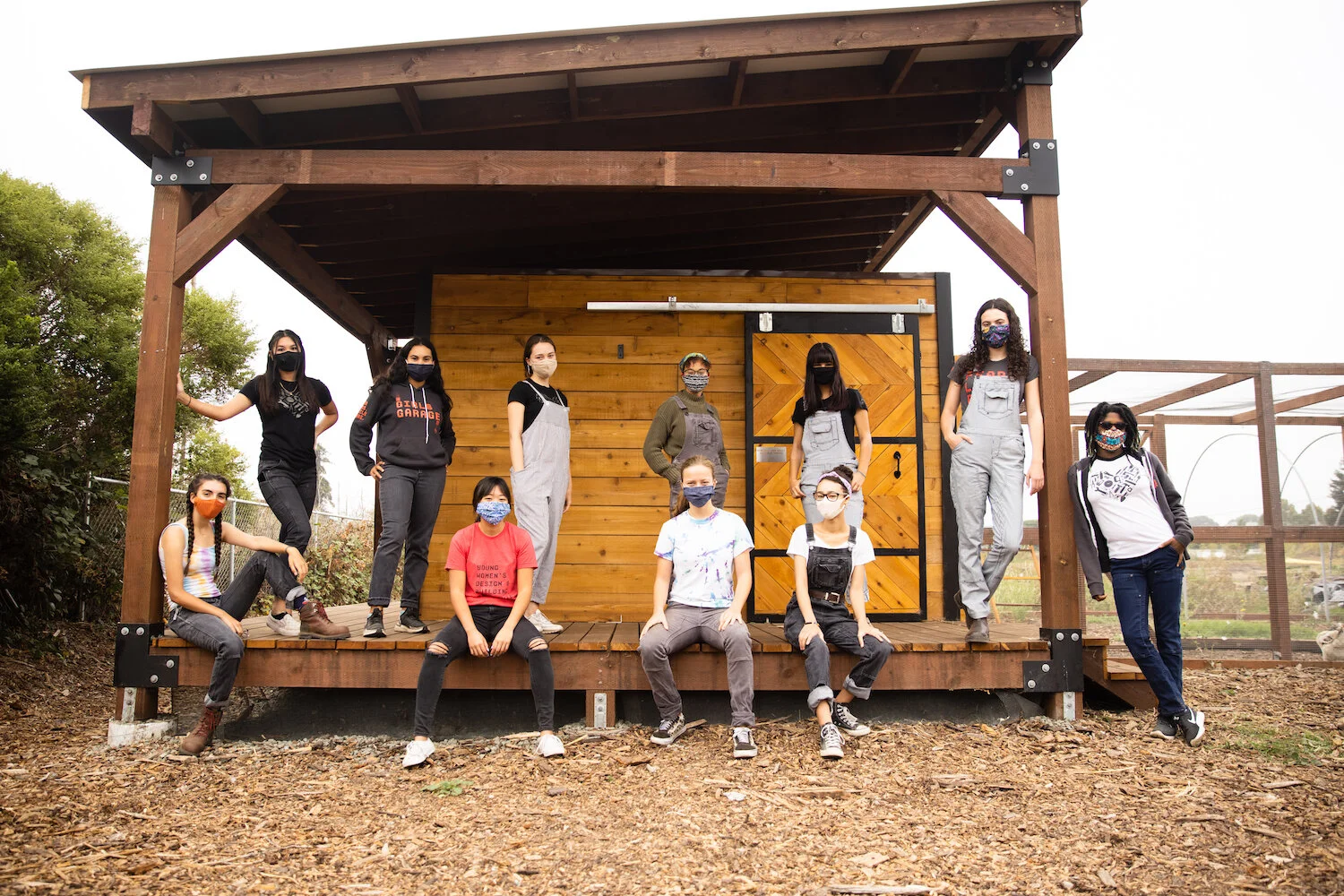These Teen Girls are Building the World They Want to See
For the nonprofit Girls Garage, power tools and construction skills provide the means to put purposeful change into action.
As part of REP CO’s mission to disseminate and elevate the stories of our subjects, we are proud to partner with Lonny on the publication of this piece. You can find this story, as well as so many others over on their site!
Can a chicken coop be an act of community solidarity? This team of teenage female builders certainly thinks so. On a 3-acre parcel of once-neglected land currently being developed for urban agriculture in North Richmond, California—an area otherwise known as a food desert, where 97 percent of the residents are people of color—the architecturally arresting structure serves as a symbol of empowerment and hope.
“I wanted so badly to reconnect to that 16-year-old part of myself who thought about architecture in a hands-on, community-connected way”
The 500-square-foot “chicken pavilion” is the latest project from Girls Garage, a Northern California nonprofit that teaches design and building skills to girls ages 9–17 through summer camps, weekend classes, and after-school sessions. Housed in a dedicated workshop space in West Berkeley, its offerings also include a one-year, no-cost Advanced Design/Build program for a cohort of teen girls from diverse backgrounds who use their newfound proficiency in carpentry, welding, drafting, and more to tackle community-based building projects such as this one. Girls Garage founder Emily Pilloton drew upon the life-changing summer she spent volunteering as a high school student on a construction site in Belize as a powerful inspiration behind her venture.
“I wanted so badly to reconnect to that 16-year-old part of myself who thought about architecture in a hands-on, community-connected way,” explains Pilloton. “And I felt if you could embed design and building within an educational setting, there would be great benefits to young people and the communities in which those schools sit. Because the things that young people would dream up and ultimately construct would be transformative in those communities.”
Simone Parisi at work. Photography by Smeeta Mahanti
Trained as an architect, the now-38-year-old Pilloton initially began teaching coed shop classes to kids under the nonprofit’s original name, Project H Design. Her impactful work transforming a struggling rural community in North Carolina through design education led to a 2010 TED Talk, a documentary (“If You Build It”), and the opportunity to bring her unique form of instruction to a charter school in Berkeley. In 2013, she decided to permanently evolve Project H into a girls-only standalone program after observing the social dynamics in her mixed-gender classrooms: Girls who were otherwise confident and competent began censoring themselves or doubting their own abilities within a traditionally male-dominated environment. In describing her opportunity statement for Girls Garage, Pilloton directly references this need. “How might we create a space that feels supportive, safe, and audacious for young women to build the world they want to see? How might we literally give girls the physical tools—and the metaphorical tools—to think about how they want the world to look and then go out and make it happen?”
Azusa James admiring her work. Photography by Smeeta Mahanti
For the girls themselves, the experience has been revelatory. “At first, I thought I just loved the activities I did there, but looking back, I can tell it wasn’t just that. It was the way I felt,” says Tori Creaves, 15, who began attending Girls Garage at age 9. “The projects, the tone of the space, and the attitude of the instructors made me feel powerful and braver. Not completely fearless, but confident enough to know I could take on whatever challenge was presented to me.”
“I went in to develop skills regarding tools, design, and building,” says 18-year-old Eliana Ives, who graduated from the advanced cohort this past summer and is now studying industrial engineering at California Polytechnic State University in San Luis Obispo. “I want to utilize [what I learned about] leadership, creative thinking, and more to shape my own future into something I want it to be.”
“A physical space is one of the first things to inform us how we’re valued or how we belong. And part of the reason we don’t see enough women in the trades is because these spaces are not designed for us.”
The physical manifestation of empowerment is core to the Girls Garage belief system. The 3,600-square-foot workspace—complete with a woodshop, welding area, community work table, and open shelves of neatly organized construction tools—communicates an immediate sense of community. One entire wall is taken up by a boldly stenciled motto: “Fear Less. Build More.” Another wall in the reception area features laser-etched wooden tiles with the names of every girl who’s ever taken part in the program. “A physical space is one of the first things to inform us how we’re valued or how we belong. And part of the reason we don’t see enough women in the trades is because these spaces are not designed for us,” Pilloton says.
Nautica Charles making sparks fly. Photography by Smeeta Mahanti
Design and fabrication skills aren’t the only lessons on offer at Girls Garage. An upstairs classroom is being turned into a print shop, with a brand-new risograph printer. A no-cost after-school program called Protest & Print explored the nature of art as activism. “A giant chicken pavilion is one example of physically altering the world in a way that feels hopeful and beautiful,” Pilloton says. “But it can also mean making protest posters about birth control or having agency over your own body. We have space for that, too.”

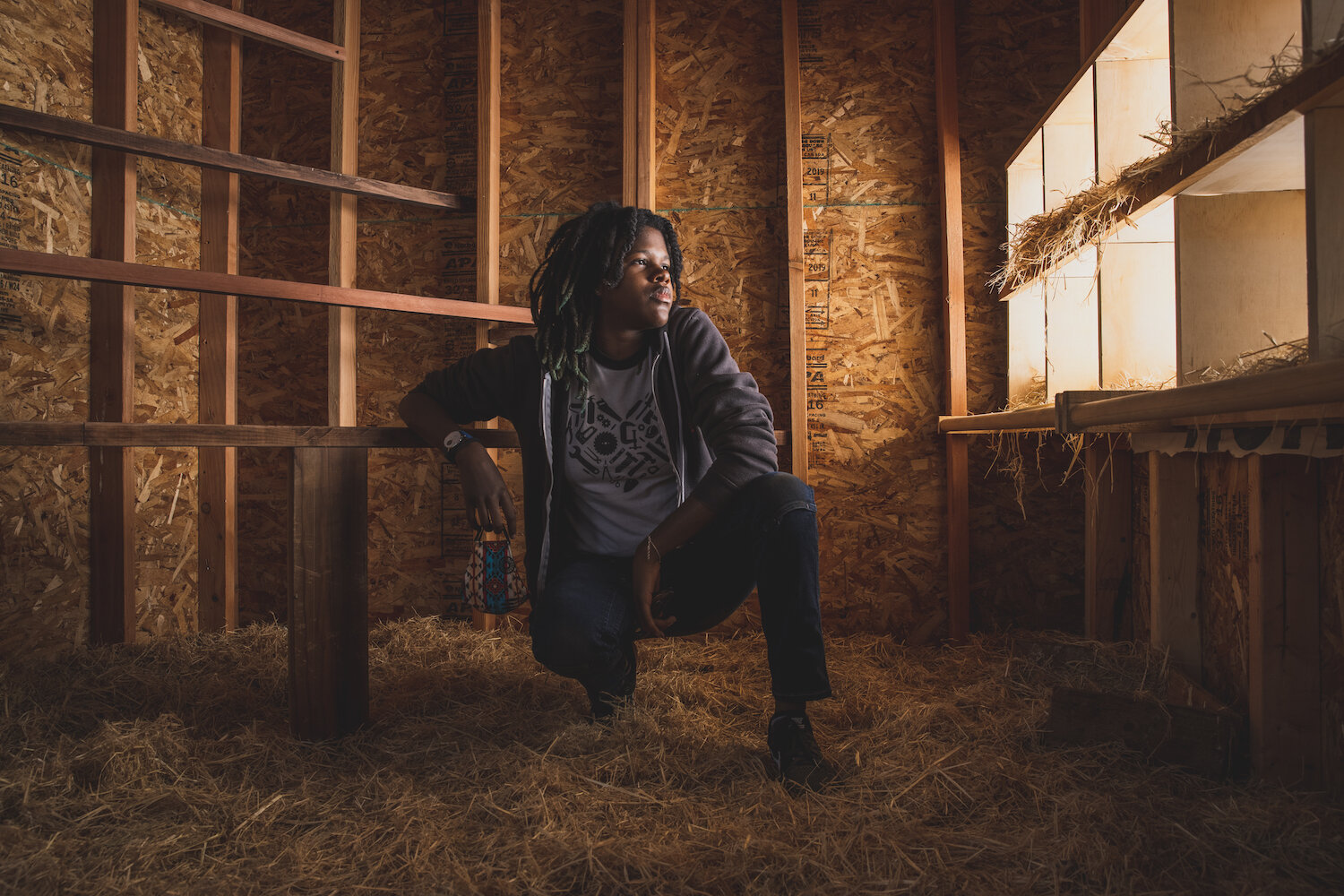
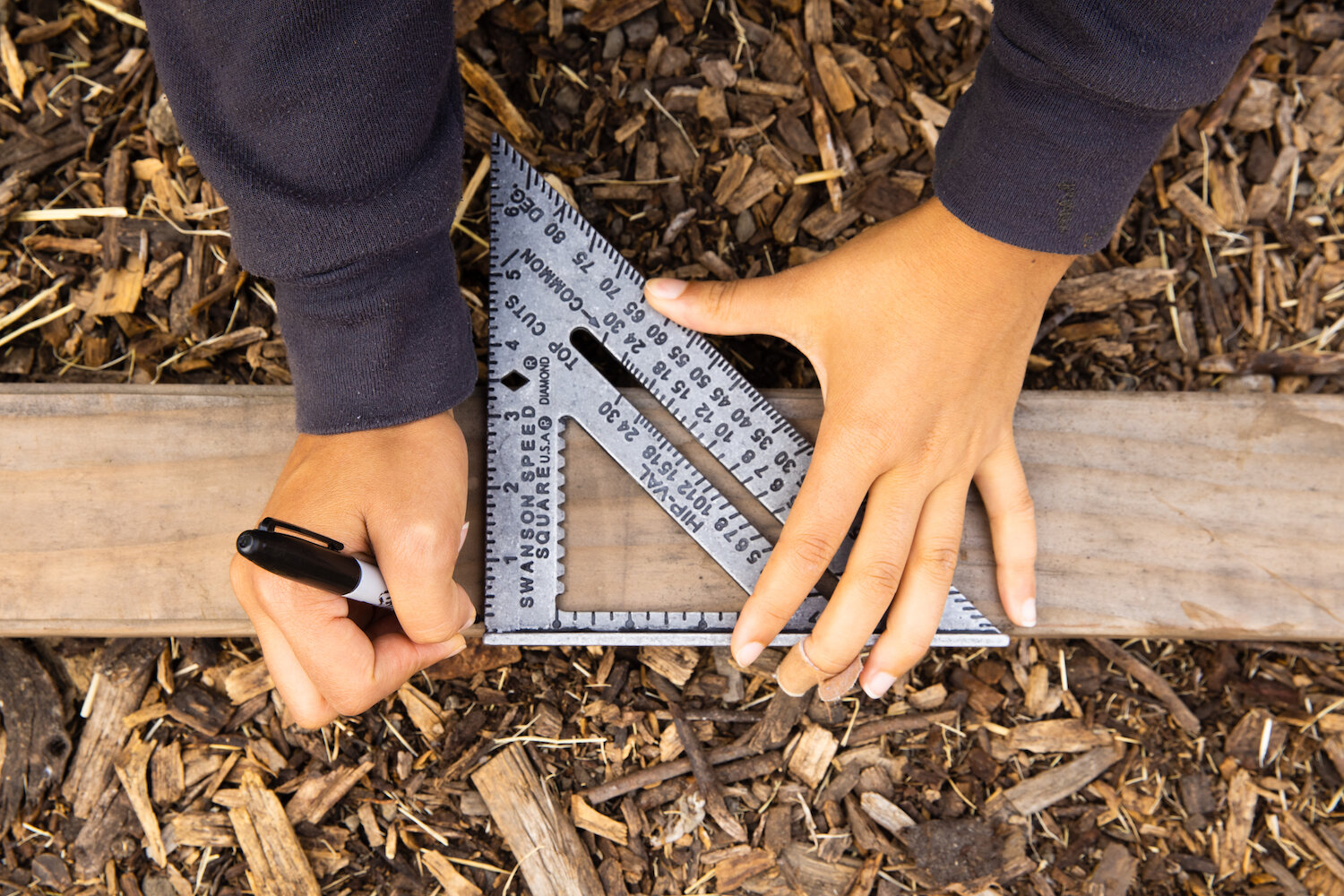

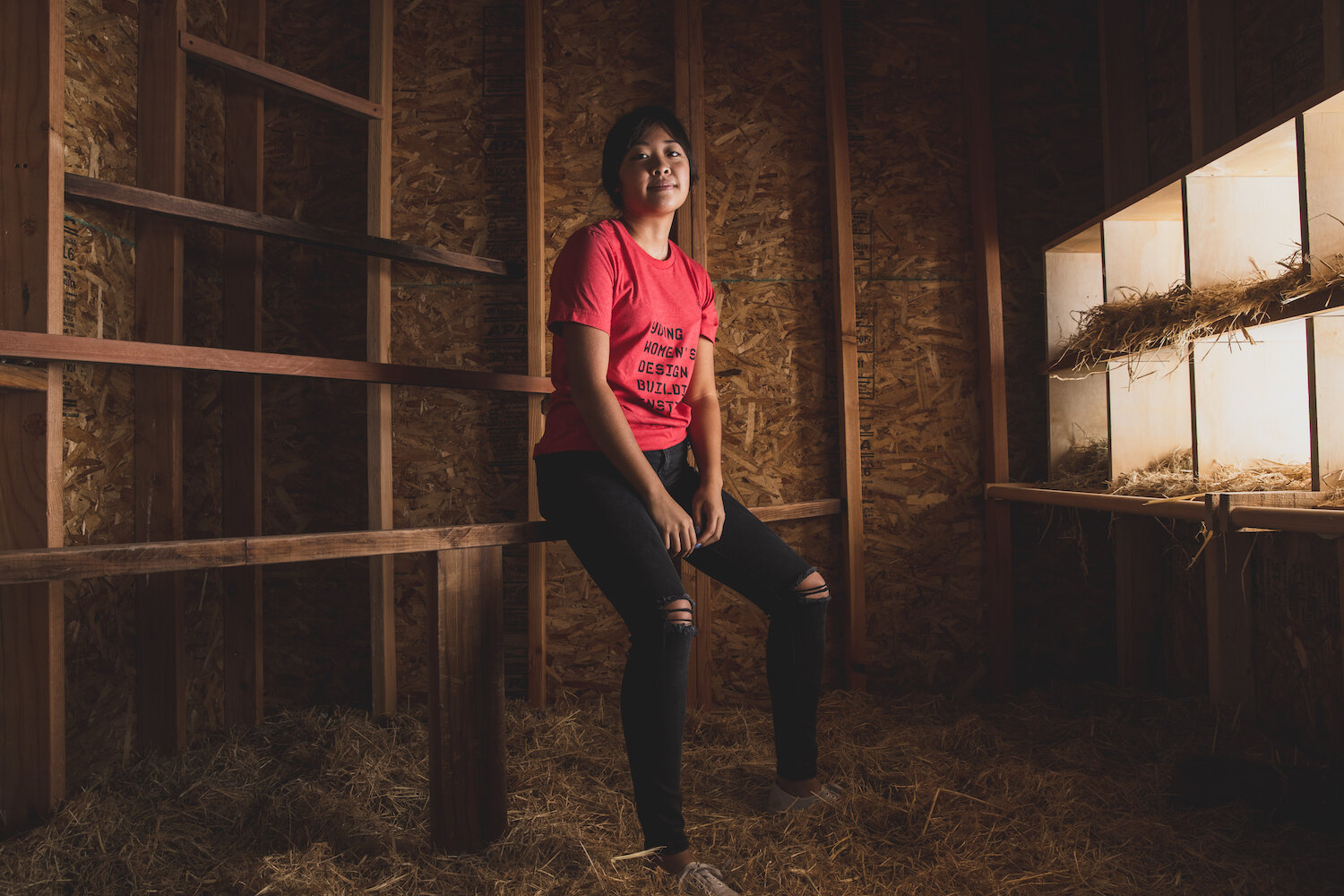
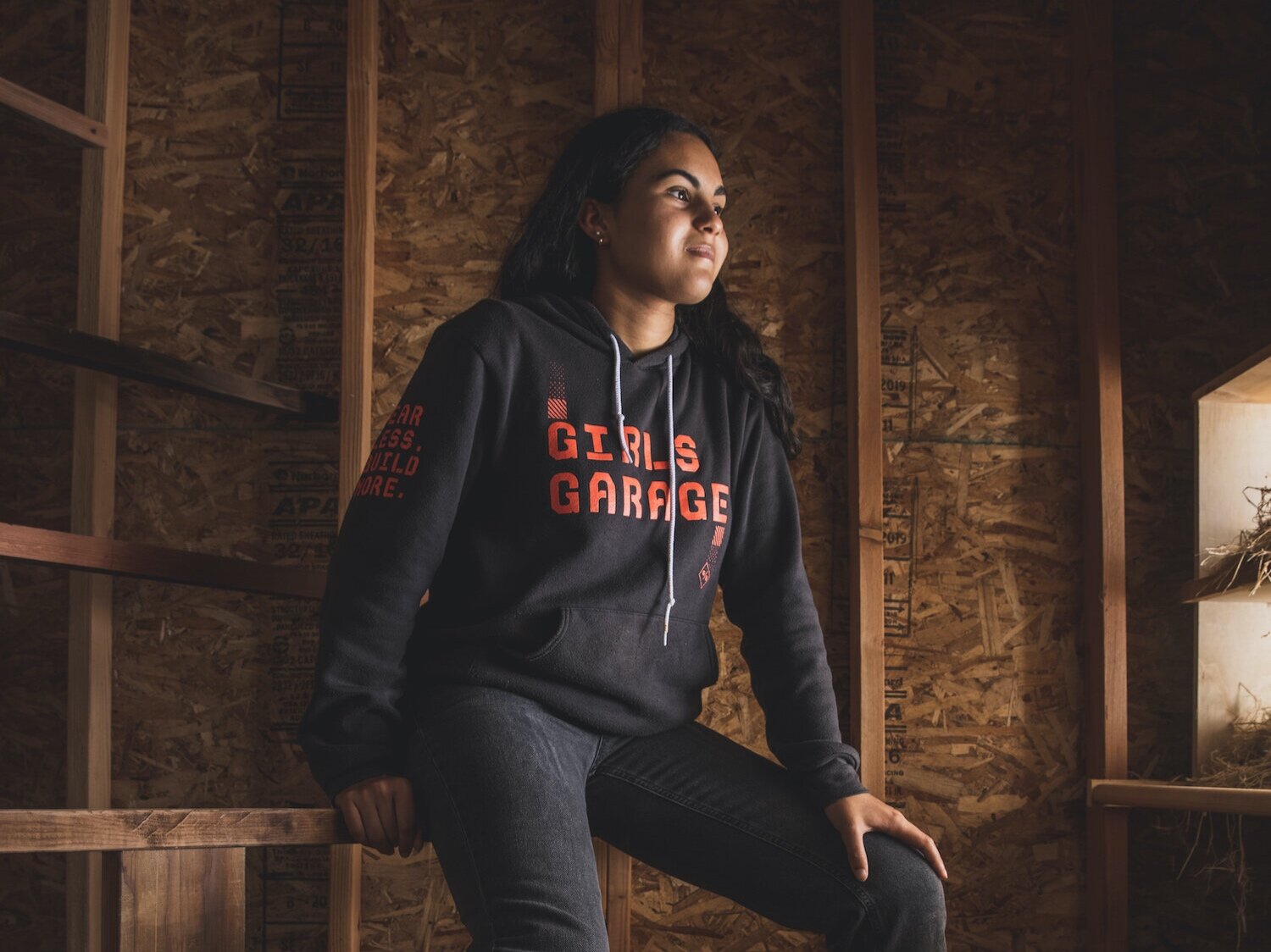
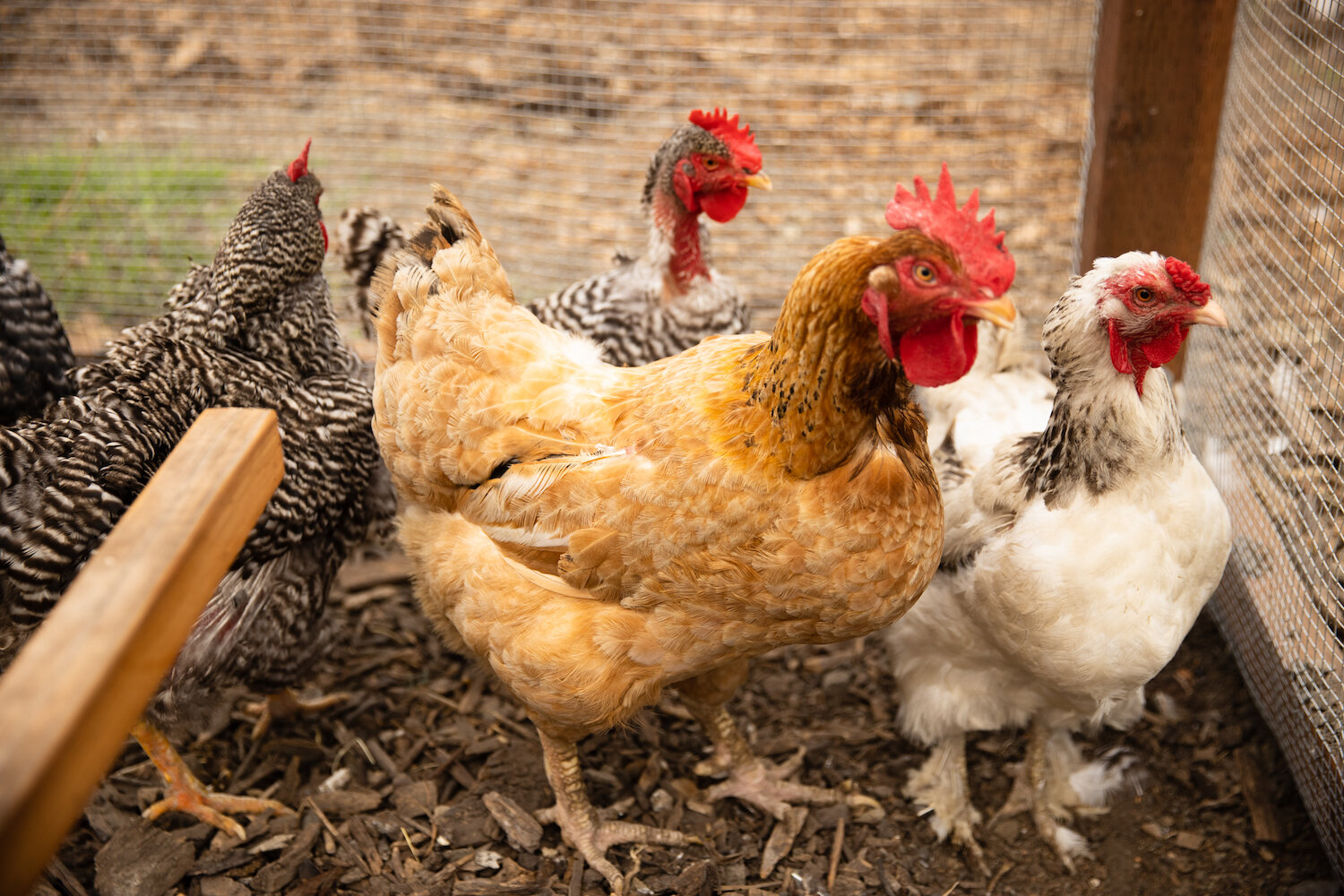
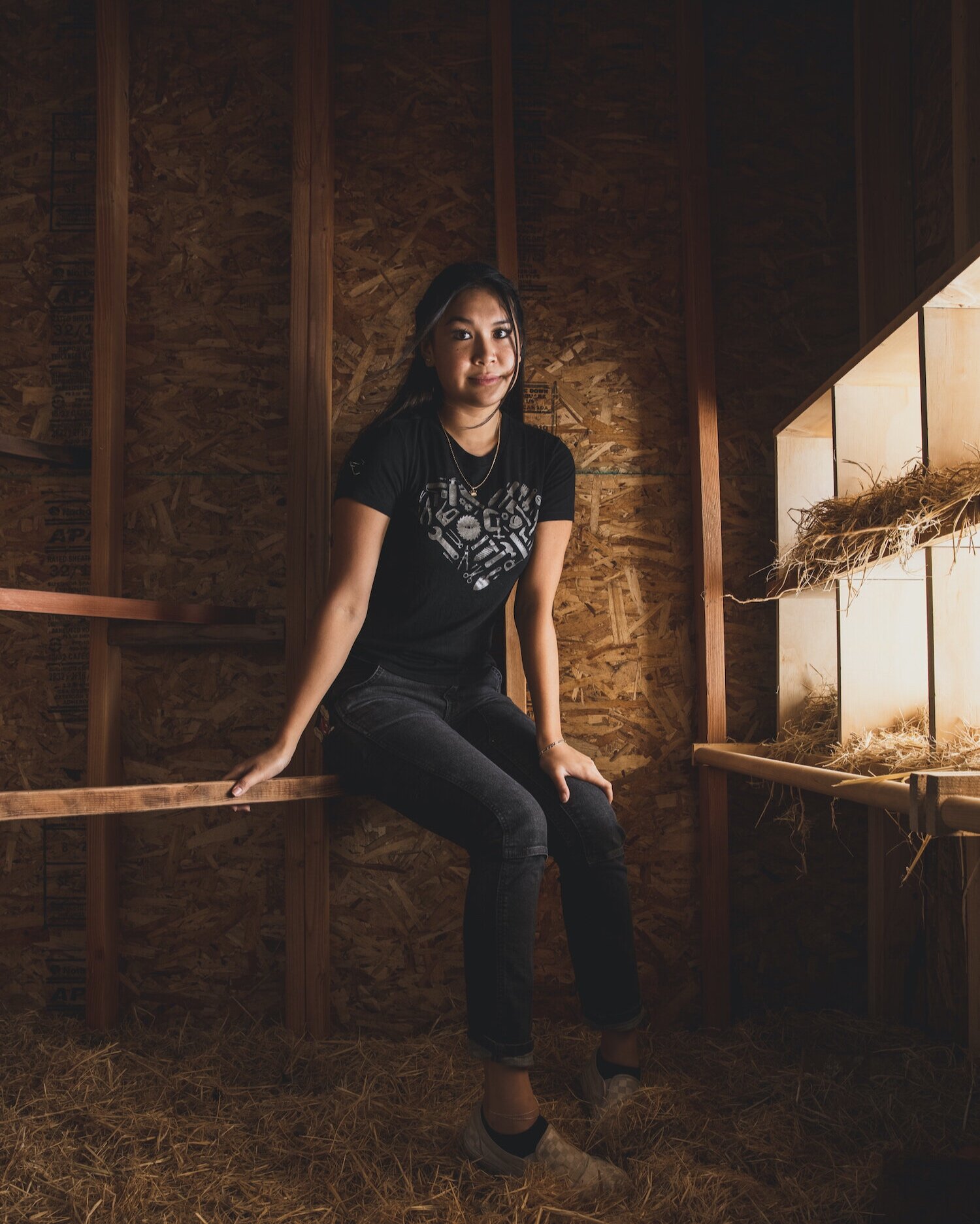
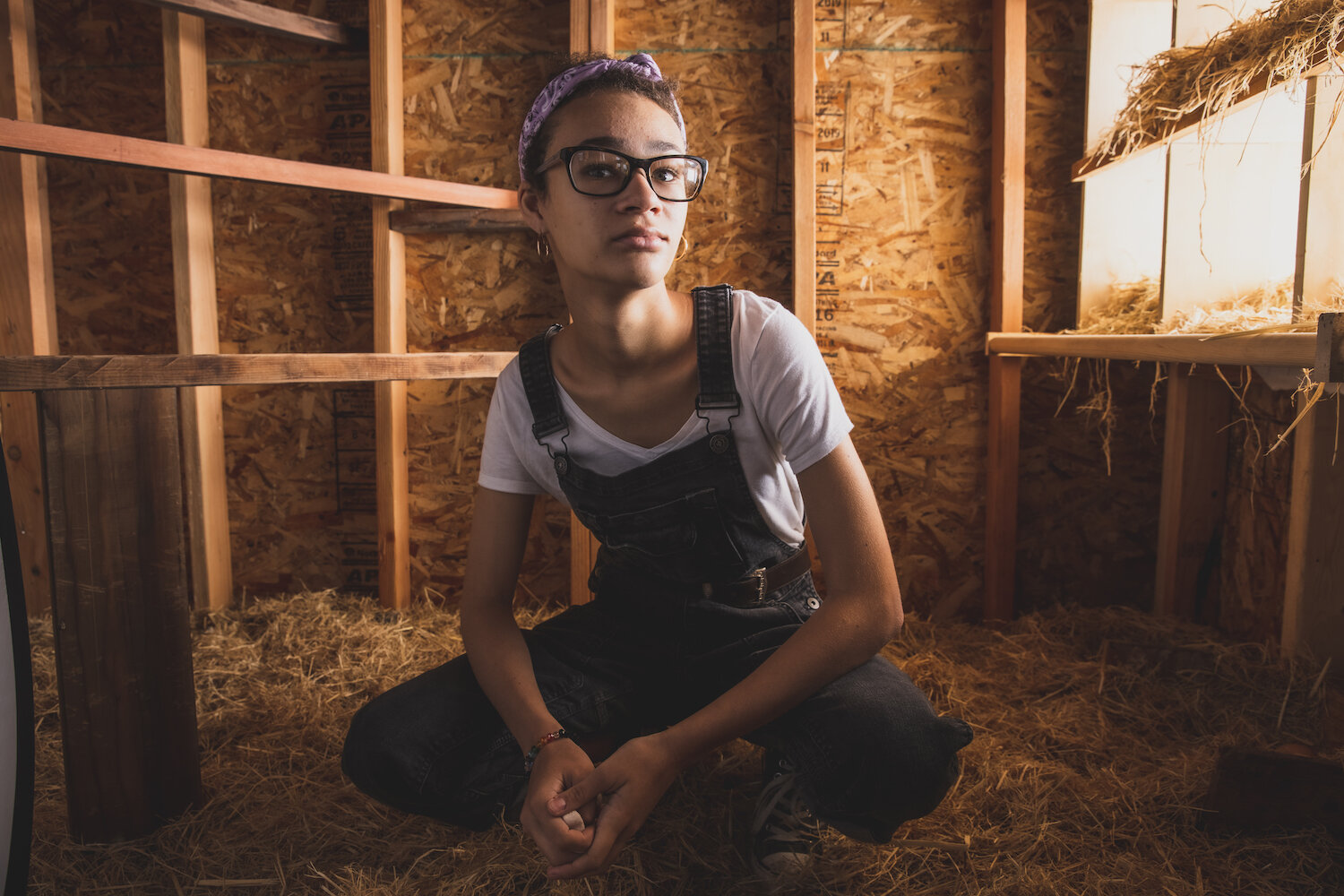
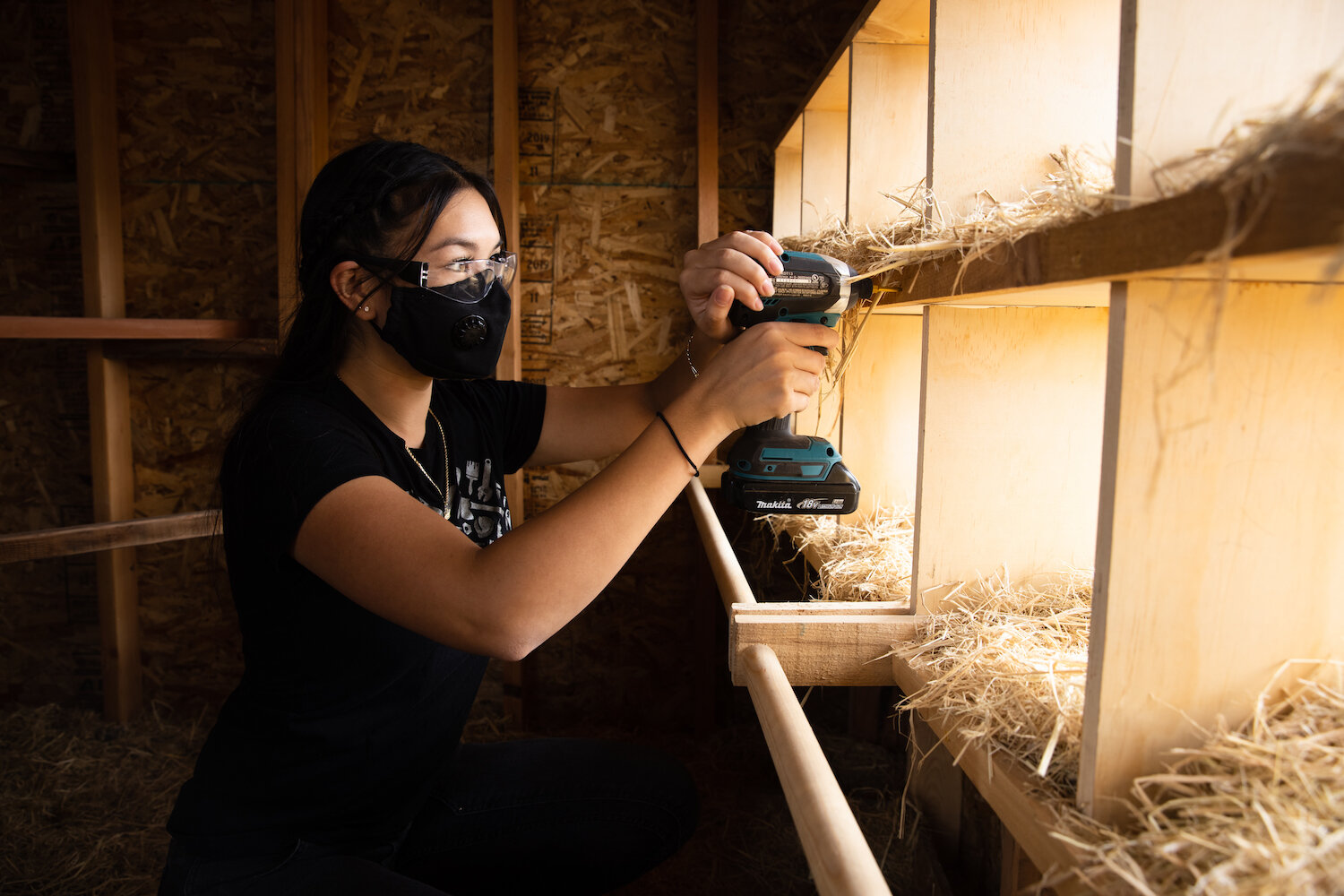
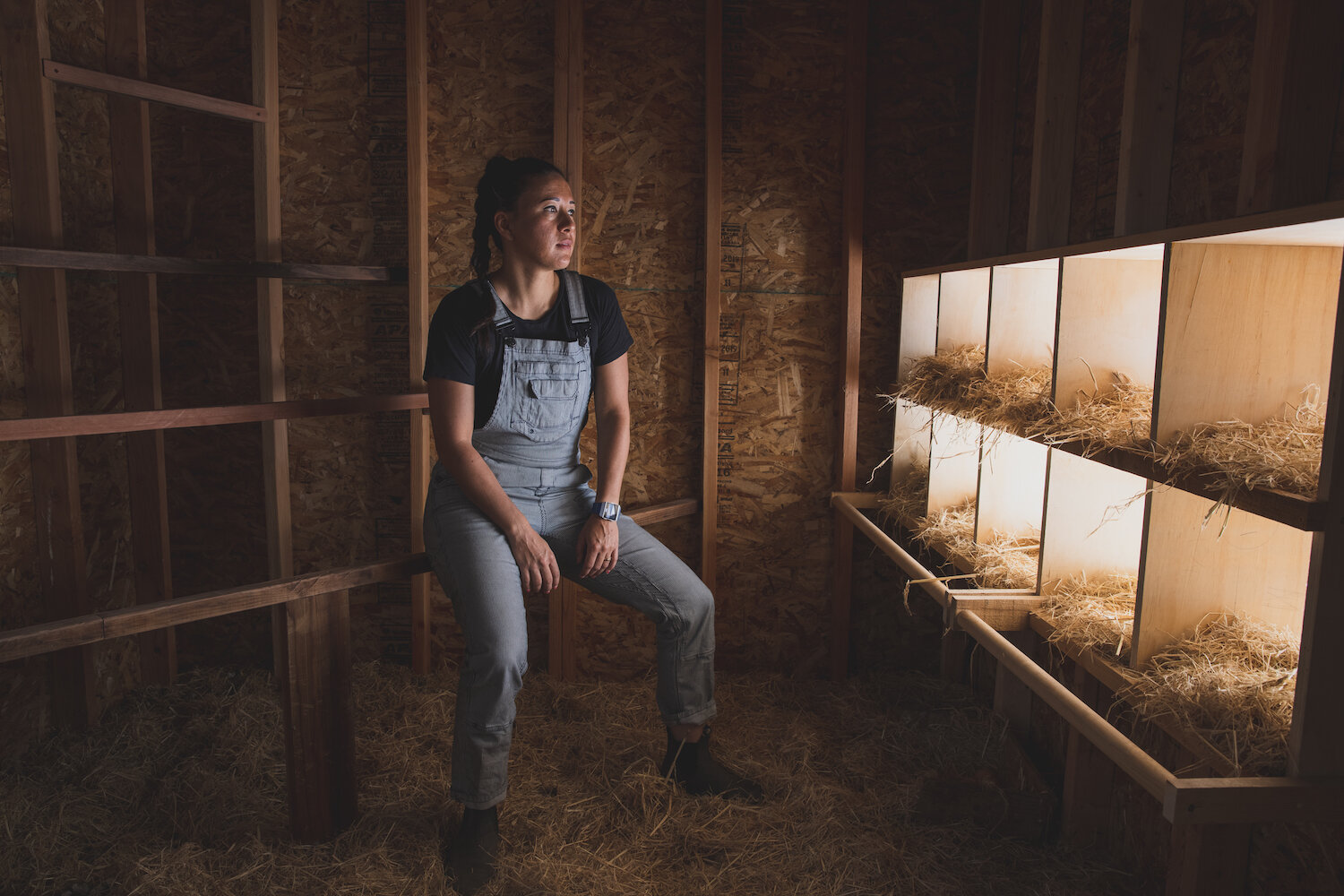
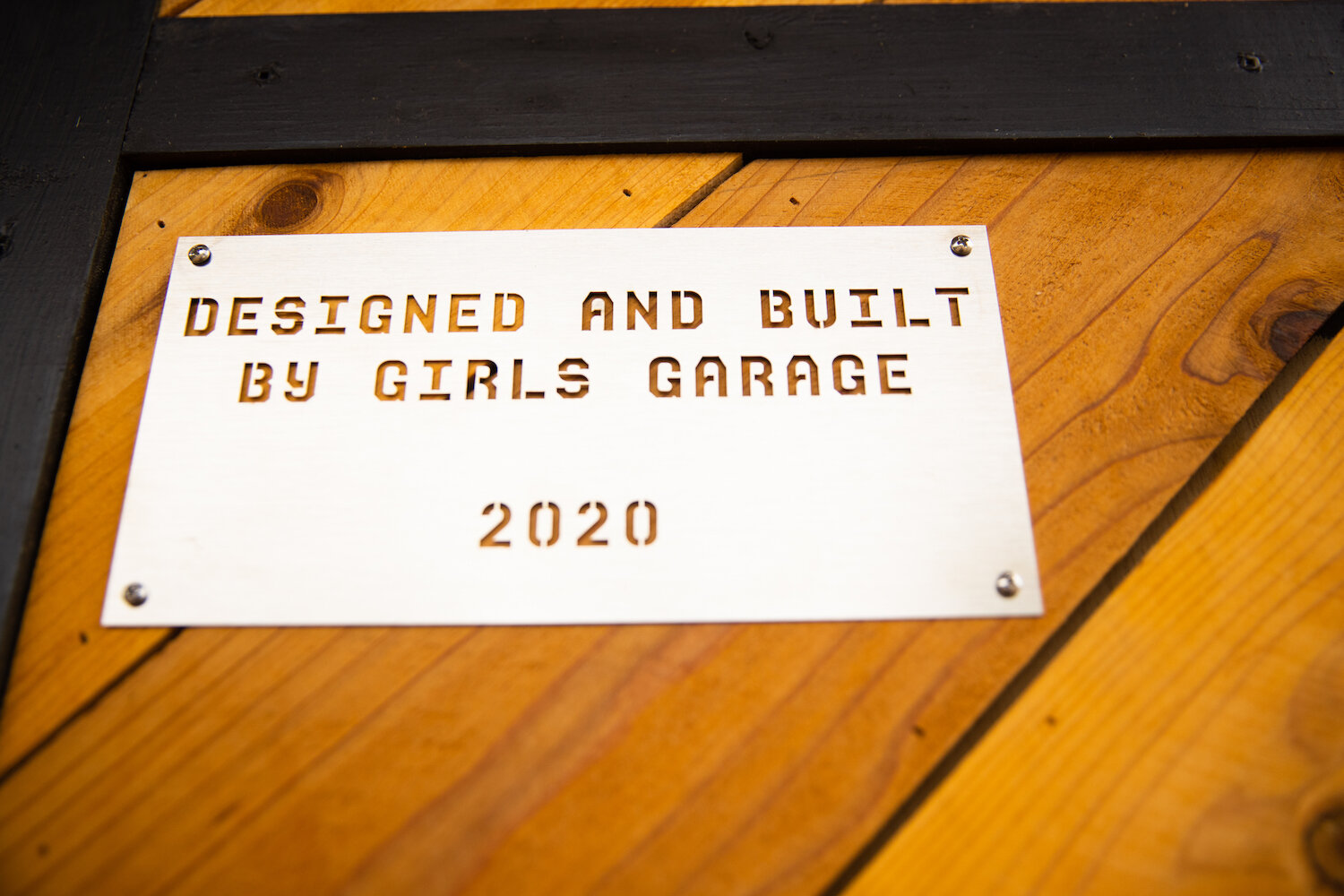
Photography by Smeeta Mahanti
Since the launch of Girls Garage, its portfolio of work has grown to include 133 community projects, including a greenhouse and furniture for a women’s shelter. The chicken pavilion built for the North Richmond nonprofit Urban Tilth is the largest physical structure they’ve tackled yet. The 14 girls in the advanced cohort—led by Pilloton and her co-instructors, architect Hallie Chen and industrial arts teacher Allison Oropallo—designed and built an 8’ x 12’ coop for 50 chickens on a redwood deck fastened to a 12-foot-high shed roof with custom-welded steel brackets. A chevron-pattern barn door reveals nesting boxes and a roosting area. Access to the 24-foot-long outdoor chicken run (complete with swing!) comes via an automatic compartment that opens at sunrise. (Read more about the design/build process in the slideshow.)
“A giant chicken pavilion is one example of physically altering the world in a way that feels hopeful and beautiful. But it can also mean making protest posters about birth control or having agency over your own body. We have space for that, too.”
“There were so many little moments that were memorable: finishing the roof, putting the walls up, Allison climbing the beams like a monkey,” recalls Eliana Ives of her work on the chicken coop. “The jokes we shared; framing the run door and then realizing it was backwards and having to redo it all; getting stabbed repeatedly by chicken wire. So much was happening at all times, and it was fabulous.”
As Pilloton herself says simply, “Literally the only thing I want to do all day is be on a construction site with those girls.”

